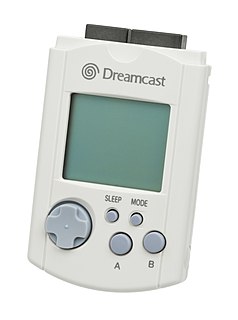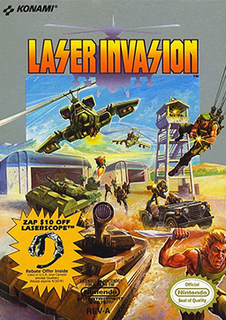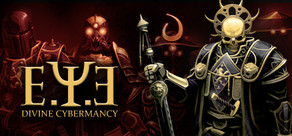Shown on the HUD

While the information that is displayed on the HUD depends greatly on the game, there are many features that players recognize across many games. Most of them are static onscreen so that they stay visible during gameplay. Common features include:
- Health / lives – this might include the player's character and possibly other important characters, such as allies or bosses. Real-time strategy games usually show the health of every unit visible on screen. [2] Also, in many (but not all) first- and third-person shooters, when the player is damaged, the screen (or part of it) flashes briefly (usually in red color, representing blood) and shows arrows or other similar images that point to the direction the threat came from, thus informing the player from which direction the enemies are attacking. In many fighting games, there are often two health bars on the top of the screen which often depletes to the middle (sometimes the opposite direction) with every punch or kick the player/enemy inflicts to their opponent.
- Time – This may be a timer counting down the time limit or the time left until a specific event. It may also be a timer counting up to records such as lap times in racing games, or the length of time a player can last in games based on survival. Many HUDs also use time displays to show the in-game time, such as the current time of day or year within the game. Some games may also display the real time.
- Weapons/ammunition – Most action games (first- and third-person shooters in particular) show what weapon is being used, and also how much ammunition is in it. Can show other available weapons, and objects like health packs, radios, etc.
- Capabilities – gameplay options that are often accessible by the player during gameplay, such as available weapons, items, or spells. This can include when the ability will become usable again, such as ammunition, magic points, or some other type of "charge up" timer. Icons and/or text may appear in the HUD to indicate other actions that are only available at certain times or in certain places, to show they are available to perform and which button performs it; for example the text "A – open door" may be displayed, but only when the character is near a door.
- Menus – Menus to exit, change options, delete files, change settings, etc.
- Game progression – the player's current score, money, lap, or level (as in stage or as in experience points). This might also include the character's current task or quest.
- Mini-map – a small map of the area that can act like a radar, showing the terrain, allies and/or enemies, locations like safe houses and shops, streets, etc. (See mini-map for more information.)
- Speedometer/Tachometer – used in most games which feature user operated vehicles. Usually shown only when driving one of these.
- Context-sensitive information – shown only as it becomes important, such as tutorial messages, special one-off abilities, and speech subtitles.
- Reticle / cursor / cross-hair – an indication of where the character is aiming or where the mouse pointer is. Pressing a key while pointing at an object or character with the cursor can issue actions like shooting, talking, picking up objects, manipulating switches, using computers, etc.
- Stealthometer – displays the awareness level of enemies to the player's presence (used mainly in stealth games and some first person shooters).
- Compass / Quest Arrow - sometimes found in RPGs, first person shooters and driving games, they help guide the player toward his or her objective. An example is in the first-person shooter BioShock , which displays an arrow pointing the direction of the next objective on the top of the player's HUD. Sometimes the compass itself might not be a real compass, rather one that points toward the next location or goal. Another notable example is in the open-world driving game Crazy Taxi .
There are also trends common among genres and platforms. Many online games show player names and a chat text box for talking to the other players. RTS games tend to have complex user interfaces, with context-sensitive panels and a full-overview mini-map with fog of war.







